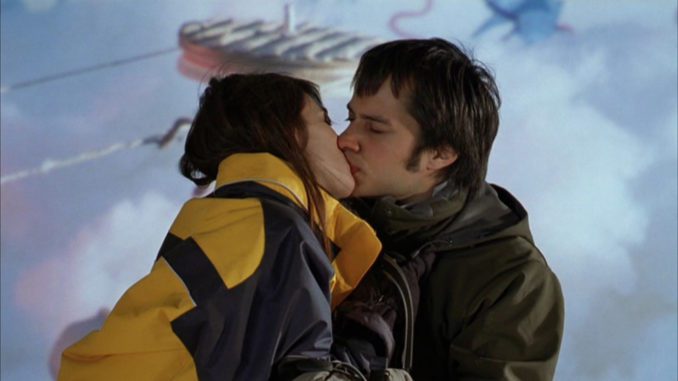
Should you watch this at weekend movie ticket prices? Yes.
Should you watch this more than once? Nah.
Note: “The Science of Sleep” came out in 2006
Score: 4.0/5
Secret ending? No.
Running time: 106 minutes (~1.75 hours)
“The Science of Sleep” is a surrealistic science fiction dramedy about a man who has vivid dreams – so vivid that he sometimes has difficulty telling the difference between the two. It stars Gael Garcia Bernal (Stephane Miroux), Charlotte Gainsbourg (Stephanie), Miou-Miou (Christine Miroux), Alain Chabat (Guy), Emma de Caunes (Zoe).
I would like to say that I loved “The Science of Sleep” when I first watched it but I was more enamoured with the person I was watching with, so much so that I didn’t even remember what the title of the film was. Years later, a friend recommended it to me, and only when I actually watched it properly did it dawn on me that the movie I saw so many years ago was this. “The Science of Sleep” is one of those wonderful arthouse films that have a touch of magic realism to it (you could say surrealism, but it feels more like Kafka than LSD to me), and I wish I’d watched it properly sooner.
Highlights
Truly blurs the line between being awake and asleep
I love how it doesn’t have that blur or bubble transition to show Stephane (Gael Garcia Bernal) falling asleep or waking it up (or perhaps too many Channel 8 dramas have drilled that trope into me). Since there’s no clear distinction between either sleep or wakefulness, you’re always suspecting that he might be dreaming, especially when it comes to ambiguous moments like his burgeoning relationship with Stephanie. It also shows several sequences that contrast what Stephane sees when he’s dreaming with the sleepwalking state that other people who are awake see.
Protagonist is the epitome of child at heart
Stephane is really one big kid – he misses his father in a way that no adult would ever admit, and lets his imagination run unfettered, without worrying about what other people think. It’s his approach to life and his mentality that make us wish we had the same childlike innocence that he had. That’s not to say Stephane is completely childish – rather, he’s got the wide-eyed curiosity about the world that we all had as kids.
Interesting dreamscape
Most of Stephane’s dreamscape is made up of cardboard, which is a wonderful symbol for how everything is just a construct in his mind. It represents the fragility of the dream world, yet it also represents his infinite creativity in how he manages to make anything out of mere cardboard. The psychedelic transitions and paint splashes – those are fairly straightforward in meaning, so eh, meh.
A love story
And what is Stephane’s motivation for most of the movie? A girl. And possibly the first girl he’s ever truly pursued, from the looks of it – which again, makes his child-like demeanour all the more adorable. It’s a story of how they become a couple, both in his consciousness and subconsciousness. For her to enter his dreams means that his adoration for her has permeated all levels of his consciousness.
Letdowns
Stephane’s douchebag moments
Unfortunately, being child-like means that Stephane has the most irritating, dislikable moments where he behaves like a selfish ass. Though it’s one of his few truly annoying flaws, it’s enough to make you wish that some disaster would befall him to teach him a lesson. Fortunately, he still pulls through by the end of the film.
“The Science of Sleep” is a delightful journey through dreams and reality.
If you liked the article, follow me on Facebook and Twitter for more (presumably) good updates!
To get in touch with me, send an email!
Leave a Reply